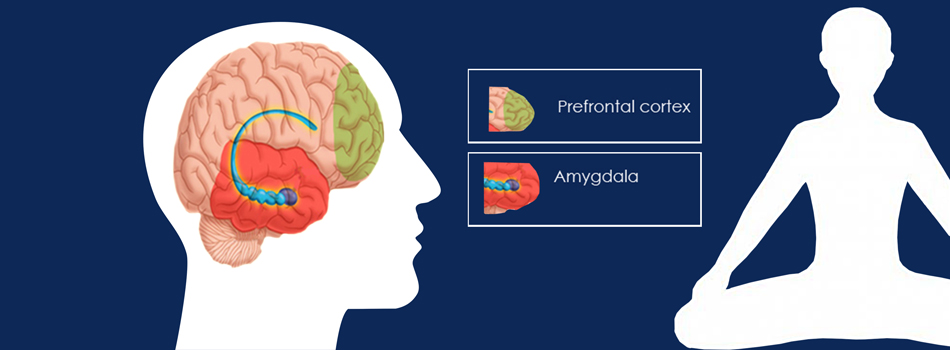
Meditation: What does Science say?
published : 5 January 2016
Meditation is a scientific process. No supernatural phenomena or miracles are involved here. It is not only for hermits or monks but for all human beings. Men or women, young or old, saint or sinner, anyone from any background can reap the mental, physical, social, and spiritual benefits of meditation. Over the last 60 years, thousands of scientific studies have confirmed this truth.
‘Everybody Say Om’
On January 8, 2011, New Scientist published a cover story on meditation. The article entitled ‘Everybody Say Om’, discussed the results of the most comprehensive research project on meditation in history. The project called the Shamatha Project, shows that one doesn’t have to be a monk or an expert to enjoy meditation’s benefits. The benefits of meditation are for everyone. Spending time in meditation is a productive time spent.
Under the leadership of Dr. Clifford Saron of the University of California’s ‘Center for Mind and Brain’, a group of researchers spent three months conducting various experiments on 60 experienced meditators.
Meditation Improves Attention
The subject of the first experiment was attention. The volunteers were asked to sit in front of a computer screen and observe a series of uniform vertical lines. Whenever they saw a line shorter than the rest, they were supposed to mark it by clicking the mouse. The scientists observed that the volunteers marked the lines with more accuracy as time passed.
The fact that meditation improves concentration and attention has been proven in several prior studies as well. In an experiment conducted by a group of researchers at the University of Wisconsin-Madison, it was observed that by meditating regularly the volunteers were able to comprehend the difference between different tones with ease. The result of this study was published in the Journal of Neuroscience.
Meditation Reduces Emotional Reaction Tendencies
The second experiment of the Shamatha Project was to observe the effect of meditation on feelings and emotions. The way they carried out this experiment is quite interesting. Unlike the previous experiment, this time the volunteers were asked to click on all the long vertical lines and not on the short lines.
The task was very monotonous, boring, and a true test of patience. The short lines came very suddenly after a very long array of long lines. The scientists wanted to see the volunteers’ ability to control themselves when faced with a monotonous and irritating task. The head of the research team, Dr. Baljinder Sahdra stated, “As we have seen, due to meditation the volunteers have a reduced tendency to be tense, and are better able to control their negative emotions. Meditation reduces a person’s emotional reactivity, that is the tendency to react very emotionally to situations.”
In another study conducted at the University of West Virginia, researchers found that meditation can help gain more control over emotions by helping regulate the activities of the brain’s amygdala.
Impact on Physical and Mental Health
Scientists say that the most positive impact of meditation is on physical and mental health. Certain diseases such as loss of appetite, indigestion, drug addiction, chronic eczema, psoriasis, depression, and chronic pain can be treated effectively with meditation.
Meditation fights aging
In another study of the Shamatha Project, it was found that meditation induces increased production of the enzyme telomerase in the human body. This enzyme helps control the aging process on the cellular level. The article related to this research was published in the official journal of the International Society of Psychoneuroendocrinology.
Meditation makes us Empathetic
The most celebrated research of the Shamatha Project was the attempt to determine whether meditation increases empathy. The study was conducted on people who had been meditating for a long time. The volunteers’ brains went through Functional Magnetic Resonance Imaging (FMRI) and it was observed that the parts of the human brain that are related to love and affection, such as the insula (insular cortex/ insular lobe) and the anterior cingulate cortex (ACC) were more active in them. The results of this study were published in the NeuroImage Journal.
In 2009, The Centre for Compassion and Altruism Research and Education was established at Stanford University. As the name suggests, the Centre aims to research and understand the neurobiological links behind human emotions such as compassion, affection, and sympathy. The Center involved neuroscientists, big corporate investors of Silicon Valley, and even the Dalai Lama. They all aimed to comprehend how a person can develop compassion, sympathy, and empathy towards others by practicing meditation.
These initiatives seem to have given rise to the idea of a mental training gymnasium, where a man would practice awakening their emotions, increasing their sense of compassion just as they might increase the performance of their muscles at the gym.
Whoever You are, Wherever May Be, You Will be Benefited
The most important truth that emerged from these studies is that no matter who you are or where you come from, you will benefit from meditation. For this, you don’t have to be a meditation expert, practice five hours a day, or start living in a cave.
Psychologist Dr. Fadel Zeidan researched to study pain pain-reducing properties of meditation. The volunteers for the study experienced positive results meditating just 20 minutes a day for three days. In his second research, he found out that the volunteers were also able to concentrate better, and experienced an increased ability of learning and recalling large numbers. The data and the related article of this research were published in the Journal of Consciousness and Cognition.
30 Minutes Practice Bring Significant Changes
Renowned meditation researcher Richard Davidson concluded from his studies, “The effect of meditation on the body and mind is surprisingly fast. In our research, we found a group of novices undergoing visible changes in their brain structure after just two weeks of learning meditation, and practicing 30 minutes a day.”
As the research on the immense capacity of the mind and the brain goes on, positive results of meditation continue to be revealed.
Meditation and Brainwave
We know that the subconscious mind is very active and creative during rest or sleep. While resting or dozing off, the body and mind slow down, and the frequency of brain waves goes down from 13 to 4 cycles per second. The scientific term for the lower frequency waves are Alpha and Theta waves.
While active, the brain continuously emits a mild electric current, termed brainwave. In 1929, Dr. Hans Berger measured this wave/current with an electroencephalograph (EEG) machine. Mental pressure, alertness, and heightened activity result in increased electric transmission in the brain. The brain wave frequency then goes up to 14-26 cycles per second. This is known as the Beta brainwave.
When we are in a state of rest or light sleep, the brain’s electrical activity is reduced. In this state, the brainwave frequency is reduced to 8-10 cycles per second. This is known as the Alpha brain wave. Theta brain wave is even slower. It has a frequency of 4-7 cycles per second.
Then comes the deep sleep brain wave. It has a frequency of 0.5-3 cycles per second and is known as the Delta brain wave. Brain waves may spike up to 27 cycles per second or higher when agitated. This state is referred to as the Gamma brain wave.
Now, if we can create a state similar to rest/drowsiness by artificial relaxation, the brain waves will go down to the alpha/theta level and we may reach the meditative state. The path to the subconscious mind will be opened. The conscious mind will then be able to direct and creatively manipulate the subconscious mind, and communicate with the unconscious realm. The subconscious mind will then work tirelessly at the optimal brain frequency to carry that instruction or idea to its logical conclusion.
Slowing down the body and reaching the alpha level is the first step towards shifting perspectives, gaining control over the mind, reaching the meditative level, and reaching the state of enlightenment. And here is the need for meditation.


















